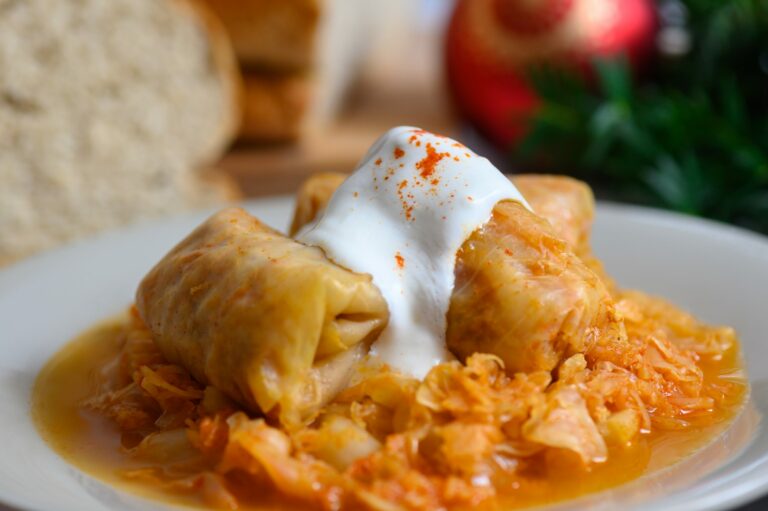Introduction: Hungarian cuisine overview
Hungarian cuisine is a unique and flavorful blend of Eastern and Western European culinary traditions. The cuisine is characterized by its rich, hearty flavors, and bold use of spices, such as paprika. Meat, especially pork, beef, and chicken, is a staple in Hungarian cuisine, and is often prepared in stews, soups, or roasted dishes. Vegetables, such as peppers, tomatoes, and potatoes, are also common ingredients in Hungarian cooking.
Paprika: the iconic spice of Hungarian cuisine
Paprika is an iconic spice in Hungarian cuisine, and is used in almost every dish. This ground red pepper adds a warm, sweet, and slightly smoky flavor to any recipe. Hungarian paprika is available in several levels of spiciness, ranging from mild to hot, and is often used to season meats, soups, and stews. One of the most popular dishes that feature paprika is goulash.
Goulash: the most popular Hungarian dish
Goulash, or “gulyás” in Hungarian, is a hearty and flavorful stew that has become the most famous dish of Hungarian cuisine. It is traditionally made with tender chunks of beef or pork, onions, garlic, carrots, and potatoes, seasoned with paprika, cumin, and other spices. The dish is simmered slowly over low heat, resulting in a thick, rich sauce that is both savory and spicy. It is often served with a dollop of sour cream, which balances out the heat of the paprika.
Sour cream: the versatile ingredient in Hungarian cooking
Sour cream, or “tejföl” in Hungarian, is a versatile ingredient in Hungarian cooking, and is used in both sweet and savory dishes. It is made by fermenting cream with lactic acid bacteria, which gives it a tangy, acidic flavor and a creamy texture. Sour cream is often used as a topping for soups, stews, and goulash, and is also a key ingredient in many Hungarian desserts, such as palacsinta (crepes) and kürtőskalács (chimney cake).
Tokaji: Hungary’s famous sweet wine
Tokaji is a famous sweet wine that is produced in the Tokaj region of Hungary. It is made from a blend of several grape varieties, including Furmint, Hárslevelü, and Muscat Blanc. The wine is known for its complex flavors and aromas, which range from honey and apricot to citrus and spice. Tokaji is often served as a dessert wine, and pairs well with fruit tarts, cheese, and chocolate.
Unique flavors: Jewish and Transylvanian influences in Hungarian cuisine
Hungarian cuisine has been influenced by several cultures throughout its history, including Jewish and Transylvanian. Jewish cuisine has brought dishes such as cholent, a slow-cooked stew of beans, potatoes, and meat, and flodni, a layered cake made with apples, walnuts, and poppy seeds. Transylvanian cuisine has contributed to dishes such as töltött káposzta, which is stuffed cabbage rolls, and kürtöskalács, a sweet pastry that is baked on a spit. These influences have added unique flavors and textures to Hungarian cuisine, making it even more diverse and delicious.

